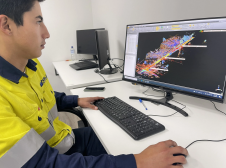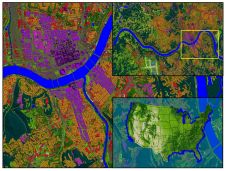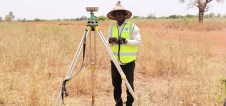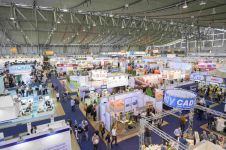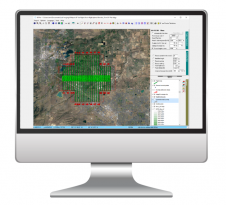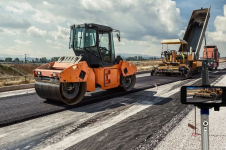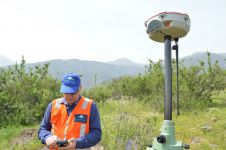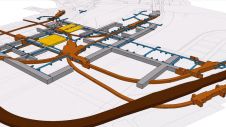London Attracts Visitors and Novel Technologies - Commercial UAV Show 2014
This article was originally published inGeomatics World.
Last October saw the first Commercial UAV Show in London. GW was there for readers. Stephen Booth reports.
To be honest I went to this event with low expectations. I thought it was going to be aimed mainly at consumers with lots of little drones buzzing around London’s Olympia. I couldn’t have been more wrong.
There is no question but that UAV’s/UAS’s, or as the popular press call them, drones, have reached maturity as data-gathering platforms for a wide range of applications. This was evident at last year’s InterGEO (see GW Nov/Dec 2014) with both fixed wing and rotory craft in wide evidence. The problem that needs to be addressed is not technical however. In most of the developed world they require permission and trained controllers (pilots in the case of the UK’s Civil Aviation Authority) to operate them. Such permits do not always apply to leisure users, leastways those with a grey cell or two of common sense to tell them flying over a football match is not a good idea.
The show attracted over 80 exhibitors ranging from global companies like BAE Systems and QinetiQ to start-ups and charities eager to promote unusual applications or technologies. Two of the latter particularly attracted my attention.
One of the challenges to be addressed by the developers of these craft is range limitation and reliable power source. Cella Energy is a company working hard on a power source based on hydrogen. Combined with a fuel cell, tiny pellets of solid fuel can be heated to release energy to recharge a battery. The developers claim that the technology can provide three times the range of a Lithium-ion battery.
A return to more proven technology but nonetheless novel for a UAV, is offered by AIE (Advanced Innovative Engineering). They believe the rotary internal combustion Wankel engine is the answer to powering larger fixed-wing craft. The Wankel has a long history and shot to fame in the late 1960s and 70s in the advanced NSU RO80 saloon car. I write with knowledge having owned one. The engine offered a beautiful turbine-like quality and was a joy to drive. Alas, there was a drawback: the engines didn’t last. A complete rebuild was needed, often after only 20,000 miles. The problem was eventually diagnosed as rapid wear on the hardened steel rotor tips, particularly during starting (it was not the vehicle for nipping down to the shops – give it the open autobahns of its builders). The problem is now solved according to AIE’s Alexander Vaughan, who told me that they use a hard ceramic material for the rotor tips. I wish them well.
英国南极调查已经使用无人机to look ahead at ice conditions as their ship tries to find a safe way through the continent’s pack ice. Swiss humanitarian assistance charity Medair meanwhile, has been using UAV’s for rapid assessment of conditions following a humanitarian disaster. I guess their imagery should be feeding into the smaller UK charity MapAction’s work, which is not dissimilar.
From the survey supplier community, Riegl, Topcon and KOREC were there but most of the remaining companies were new to this reporter. They ranged from companies like Alta Devices, which develops solar-powered UAVs with panels made from gallium arsenide, to a raft of people offering various sensors for DIY system builders.
Running alongside the show was both a conference and a series of short seminars. I was only able to attend two, one of which was from the estimable Dr Mike Smith of Kingston University London on camera selection and mission planning. He covered so much in just half an hour I felt I’d had a full refresher course on photography!
The event attracted over 1500 visitors and the attendance and support from exhibitors has made the organisers move the event to ExCel in East London next year (20-21 October 2015). If you are using or planning to use a UAV you need to be there. You might also visit www.smalluavcoalition.org where other users and developers congregate. The show was also the launch pad for a magazine addressing the sector. Unmanned Systems Technology that will set you back £60 for four issues.
This article was published in Geomatics World January/February 2015
Make your inbox more interesting.Add some geo.
Keep abreast of news, developments and technological advancement in the geomatics industry.
Sign up for free

